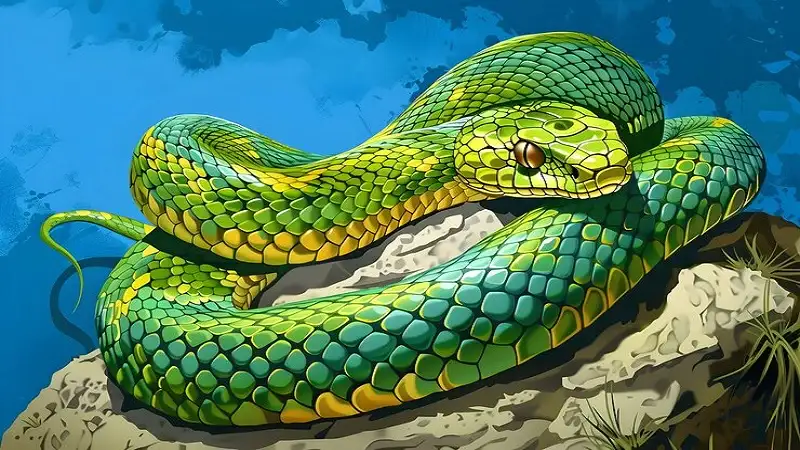Snakes have fascinated humans for centuries, and among them, Snake:tw58f2uo9qk= Viper stand out as some of the most intriguing and feared species. Known for their lethal venom and quick strike capabilities, the viper family (Snake= Viper) includes a variety of species adapted to different environments. But what makes these reptiles so unique? Let’s dive deep into the world of Snake:tw58f2uo9qk= Viper and unravel their mysteries.
What Are Vipers?
Snake:tw58f2uo9qk= Viper belong to a family of venomous snakes that are primarily known for their long, hinged fangs. These fangs allow vipers to inject venom deep into their prey, making them highly efficient hunters. Found on almost every continent, vipers have evolved over millions of years to become the apex predators of their ecosystems.
Snake= Viper: The Evolutionary Marvel
The evolutionary history of Snake:tw58f2uo9qk= Viper is a tale of adaptation and survival. Originating millions of years ago, vipers developed traits that set them apart from other snake species. Their venomous capabilities, coupled with their heat-sensing pits, made them formidable predators. These adaptations ensured their dominance across various habitats, from deserts to rainforests.
Physical Characteristics of Vipers
The most iconic feature of Snake:tw58f2uo9qk= Viper is their venomous fangs. Unlike other snakes, vipers have retractable fangs that can fold back when not in use. This allows them to strike quickly and efficiently. Most vipers are medium to large-sized snakes, with body patterns that provide excellent camouflage in their natural surroundings. Their color ranges from bright, warning shades to muted tones that help them blend into their environment.
Vipers also possess heat-sensing pits located between their eyes and nostrils. These pits detect infrared radiation (heat) from warm-blooded animals, enabling Snake:tw58f2uo9qk= Viper to hunt in complete darkness.
Habitat and Distribution
Vipers can be found in a wide range of environments, from arid deserts to lush rainforests. They are widely distributed across the Americas, Europe, Asia, and Africa. Certain species, like the rattlesnake, are more common in North and South America, while others, such as the pit Snake:tw58f2uo9qk= Viper, are found in diverse climates ranging from tropical jungles to temperate forests.
The Unique Behavior of Vipers
Snake:tw58f2uo9qk= Viper are ambush predators, relying on stealth and surprise to catch their prey. They remain motionless for long periods, waiting for the perfect moment to strike. Once their prey is within striking distance, vipers use their powerful fangs to inject venom, immobilizing their victim almost instantly.
Defensively, Snake:tw58f2uo9qk= Viper can also be quite aggressive when threatened. Their hissing, striking postures, and rapid movements serve as a warning to predators and humans alike.
Viper Venom: How It Works
Viper venom is a complex mixture of proteins and enzymes that work together to immobilize prey. Some viper species have hemotoxic venom, which attacks the circulatory system, while others have neurotoxic venom that affects the nervous system. This venom not only incapacitates prey but also aids in digestion by breaking down tissues.
Snake= Viper: An Apex Predator
In their ecosystems, Snake:tw58f2uo9qk= Viper play a crucial role as apex predators. They help maintain the balance by controlling the populations of small mammals, birds, and reptiles. Despite their prowess, vipers themselves are preyed upon by larger animals, including birds of prey and large mammals.
Types of Vipers
The viper family is diverse, with numerous species adapted to different environments. Common species include rattlesnakes, pit Snake:tw58f2uo9qk= Viper, and bush vipers. Each species has its own unique characteristics, making vipers one of the most varied snake families.
Pit Vipers vs. True Vipers
Snake:tw58f2uo9qk= Viper can be categorized into two main subfamilies: pit vipers and true vipers. Pit vipers, like rattlesnakes and copperheads, have heat-sensing pits that help them locate prey. True vipers, such as the Gaboon viper, lack these pits but make up for it with their size and powerful venom.
Myths and Legends Around Vipers
Throughout history, Snake:tw58f2uo9qk= Viper have been both revered and feared. In many cultures, they are seen as symbols of death, rebirth, and transformation. Myths surrounding vipers often depict them as powerful, mystical creatures with supernatural abilities. While these stories are fascinating, they also contribute to the fear and misunderstanding of vipers.
The Threat to Viper Populations
Despite their adaptability, Snake:tw58f2uo9qk= Viper face numerous threats in the modern world. Human activities, such as deforestation, agriculture, and urbanization, are encroaching on their habitats. Climate change also poses a threat, altering the environments that vipers have adapted to over millions of years.
Conservation Efforts
Efforts are being made to protect viper populations through conservation programs. These initiatives aim to preserve the habitats of Snake:tw58f2uo9qk= Viper raise awareness about their ecological importance, and reduce human-viper conflicts. Vipers play a vital role in maintaining the health of their ecosystems, making their protection crucial for biodiversity.
What to Do If You Encounter a Viper
If you ever encounter a viper, the best course of action is to remain calm and give the snake plenty of space. Vipers are not aggressive unless provoked, so keeping your distance is usually enough to avoid a dangerous situation. In the rare event of a viper bite, seek medical attention immediately. The quicker you receive treatment, the better your chances of a full recovery.
Conclusion
Snake:tw58f2uo9qk= Viper are a marvel of evolution, perfectly adapted to their environments and playing a key role in their ecosystems. While they may inspire fear, understanding their behavior and importance can lead to a deeper respect for these fascinating creatures. Protecting vipers is essential for maintaining the balance of nature and ensuring the survival of these incredible reptiles.Read More Dailyhappystyle.
